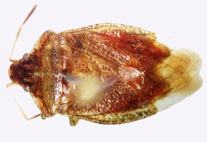Abstract
As currently understood Atractus latifrons is widely distributed in South America, occurring from Suriname to the east of the Andes in Bolivia. Throughout this widespread distribution, at least three distinct color patterns were previously reported in the literature. Here, we test whether quantitative variation and qualitative distribution of morphological characters are correlated with any color pattern displayed by the species along its range. We recognize three aposematic color patterns (bicolor in monads, tricolor in dyads, and tricolor in tetrads) for A. latifrons. We found no obvious correspondence between these patterns and any character systems analyzed herein. Additionally, we redescribe the holotype of A. latifrons and report on morphological variability (meristics, morphometrics, color patterns, and hemipenis) and geographical distribution (extending its distribution to the state Roraima, Brazil) of the species.

